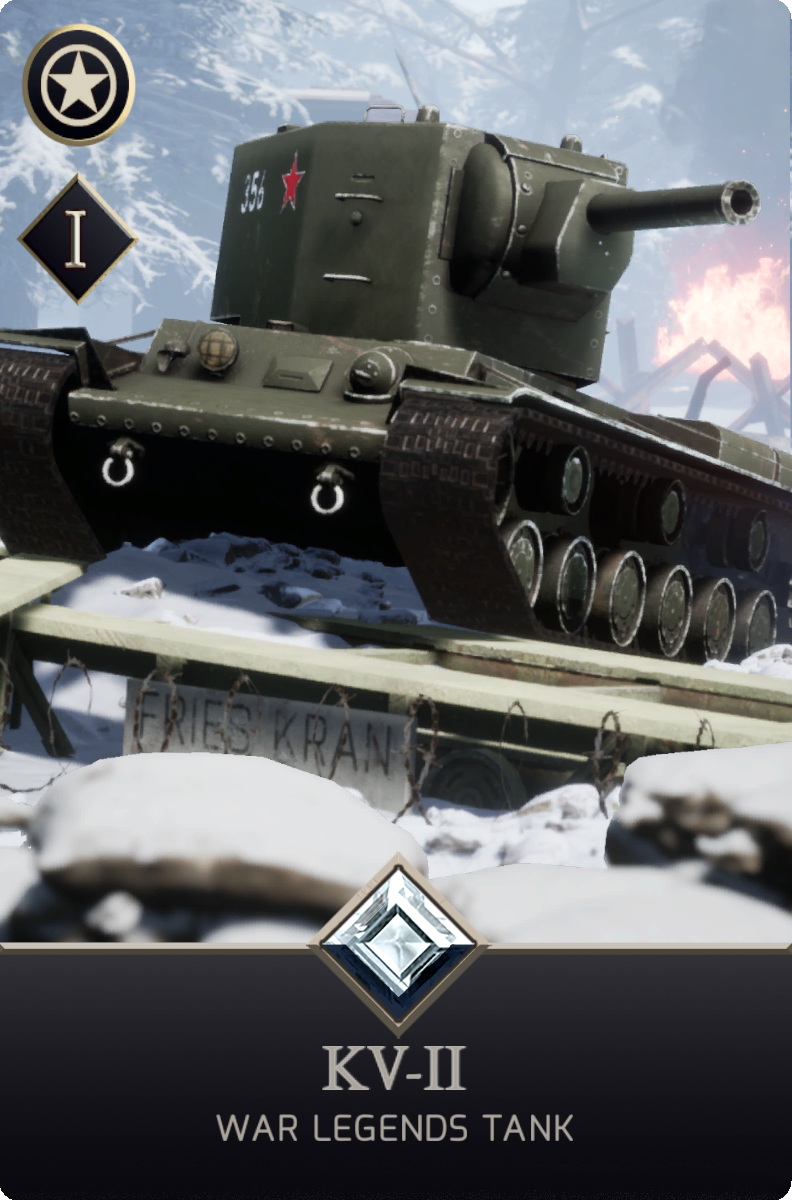


Tank Background
The Russ-Finnish war proved the decision to manufacture the KV-I.
When encountering difficulties during the Winter War in Finland, they equipped a special version with a howitzer, in support of the regular KV-I units.
The KV-II first service was in the Winter War as a prototype, as did many other vehicles.
However they were too late to test it against the fortified Finnish defenses.
Despite this , they still destroyed some remaining bunkers and AT guns.
When the KV-II operated in vast numbers, it was invulnerable to direct fire from all but high velocity weapons at close-range. The best the enemy could hope was force the KV-II crew to abandon the vehicle by disabling.The KV-II paid a high price for its immense gun and vast armor. The mobility between engagements and during battle was heavily restricted by many of the initial gear and transmissions KV-I faced.
This situation was made even worse, now the model weighed nearly 58 tonnes depending on the model, the engine was no more than 25 km/h and only reached 12 km/h off-road.
These problems all limited the flexibility of the KV-II combat, but nevertheless, it was a formidable opponent if dug into a strategic position, however it lacked speed and mobility.
The worst problem for the KV-II was its unreliability. The gearbox would often break easily, and the gun got an immense recoil ( the engine or gearbox could suffer severe damage ).
The majority of MV-II losses in 1941 were due to breakdowns or lack of fuel which forced them to be abandoned.Despite this, KV tanks came as a shock to German invaders due to their resilience, they had no comparable tanks in strength, and a few AT guns that could destroy them.
Marshal Rokossovsky later recalled in his memoirs:
“They withstood the fire of every type of gun that the German tanks were armed with. But what a sight they were returning from combat. Their armor was pock-marked all over and sometimes even their barrels were pierced.”
Similarly experience on 23rd June, 1941 in Lithuania proves just how resilient could be, here is a record:
“Our companies opened fire from 700 m (765 yd). We got closer and closer… Soon we were only about 50-100 m (55-110 yd) from each other. A fantastic engagement opened up – without any German progress. The Soviet tanks continued their advance and our armor-piercing projectiles simply bounced off. The Soviet tanks withstood point-blank fire from both our 50 mm (1.97 in) and 75 mm (2.95 in) guns. A KV-2 was hit more than 70 times and not a single round penetrated. A very few Soviet tanks were immobilized and eventually destroyed as we managed to shoot at their tracks, and then brought up artillery to hammer them at close range. It was then attacked at close range with satchel charges.”








